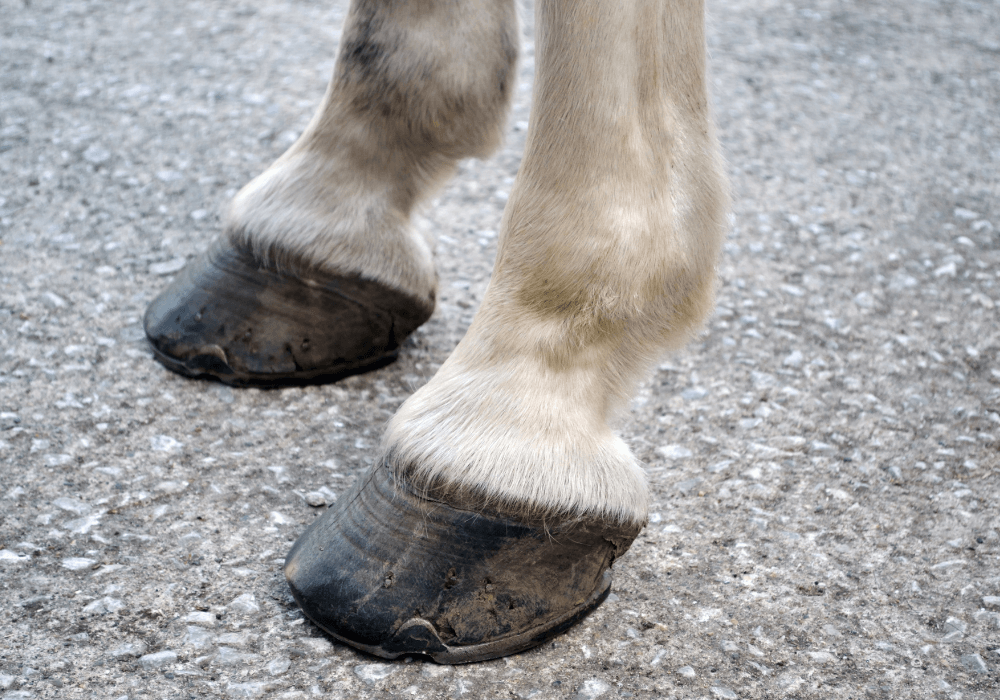Lameness is a very common problem in horses, and it can have a huge range of causes. As a horse owner, it’s important to be able to identify the (sometimes very subtle) signs of lameness in horses. This blog outlines the signs of lameness in horses, as well as what you should do if you suspect that your horse may be lame.
What is Lameness in Horses?
Lameness can vary from very mild to very severe, and most horses will experience some kind of lameness at some point in their lives. It can occur for a variety of reasons, and the term can be used to describe a number of injuries or ailments that make it difficult or painful for the horse to move normally. Lameness can involve any part of the body (not just the feet and legs), and can involve bone or soft tissue. For more information on the possible causes of lameness in horses, take a look at our blog.
Signs of Lameness in Horses
There are a number of signs to look out for when it comes to spotting lameness. These include, but are not limited to:
Gait abnormality: Is your horse’s rhythm not quite right? Are they moving with unusually short, choppy strides? If you notice a gait abnormality when riding or lunging your horse, it may mean that your horse is lame. Other symptoms, such as dropping a hip, excessive head bobbing or difficultly making transitions should also be investigated.
Inability or reluctance to bear weight on a limb: It’s normal for horses to rest a foot whilst standing, but any changes in their normal habits or signs of discomfort should be looked into.
Odd stance or reluctance / inability to stand: A horse leaning backwards, as though trying to relieve the weight on their forelegs, may be suffering from laminitis. Anything from mild stiffness to a limb fracture could also affect a horse’s ability or willingness to stand up.
Behavioural problems: Bucking and rearing, as well as resistance to being tacked up, can be symptoms of lameness. Becoming difficult for the farrier or disliking having their feet picked out are also things to look out for. As with any behavioural change, these should be investigated properly.
Heat and Swelling: These are symptoms of possible injury or infection and should be investigated. It’s important to check your horse’s legs regularly, so you can spot any abnormalities.
What to do if You Suspect that Your Horse is Lame
It’s worth noting that the breadth and depth of the causes, symptoms and presentation of lameness can vary immensely. Furthermore, the degree of lameness does not always correlate with the severity of the injury or ailment. A horse may be lame more so in one gait, or on the left or right rein. A horse could be lame when ridden, but not when lunged. The area that appears to be affected may not be the location of the injury or ailment causing the symptoms.
This is why it’s essential to have lameness examined properly by a vet. They will be able to conduct a lameness exam, identify the cause of the lameness and action any necessary treatment. It’s also important to remember that leaving lameness untreated could allow the root cause to worsen, resulting in further problems.
Being confident in trotting up your horse for the vet will help them and you when it comes to investigating and diagnosing the lameness. You can read our guide to trotting up your horse to familiarise yourself.
Lameness Investigation | Avonvale Equine Vet Practice
Avonvale Equine Vet Practice is an independent equine vet clinic based near Banbury, Oxfordshire. Our experienced and dedicated equine vets are able to conduct lameness examinations to identify and treat lameness. Furthermore, our full surgical facilities allow us to perform a range of orthopaedic surgeries. Register your horse with us today.








